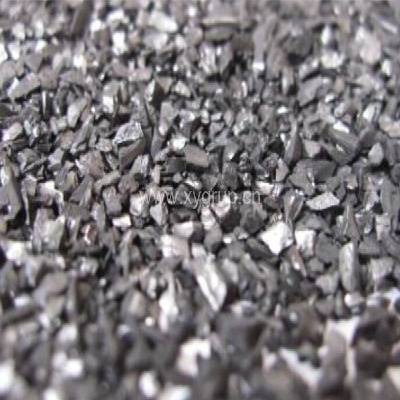The Role of Coconut Shell Activated Carbon And Precautions For Use
Coconut Shell Activated Carbon is a carbon with developed pore structure, large specific surface area and adsorption capacity. The total surface area per gram of activated carbon can reach more than 1500 square meters. There are many types of activated carbon. According to different raw materials, it can be divided into plant raw material charcoal, coal-based charcoal, petroleum charcoal, bone charcoal, blood charcoal, etc.; according to the manufacturing method, it can be divided into gas activation charcoal, that is, physical activation charcoal; chemical activation method Carbon is chemical activated carbon; chemical-physical activated carbon; according to its appearance, it can be divided into powdered activated carbon, amorphous granular activated carbon, shaped granular activated carbon, spherical carbon, fibrous carbon, fabric-like carbon, etc.
Coconut shell activated carbon can be divided into gas phase adsorption carbon, liquid phase adsorption carbon, sugar carbon, industrial carbon, catalyst and catalyst carrier carbon according to its purpose. Activated carbon has adsorption properties and catalytic properties. It is insoluble in water and other solvents and has physical and chemical stability. Except for contacting with oxygen at high temperature, reacting with strong oxidants such as ozone, chlorine, dichromate, etc., it is extremely stable under actual conditions of use. Due to the excellent properties of activated carbon as an adsorbent, the application of activated carbon is very wide.

Coconut Shell Activated Carbon
What are the functions of coconut shell activated carbon
1. Coconut shell Granular Activated Carbon is often used in gas phase adsorption, usually by letting air flow through the activated carbon layer for adsorption. According to the state of the activated carbon layer in the adsorption device, the adsorption layer has a fixed layer, a moving layer and a fluid layer. However, small adsorbers such as deodorizers in refrigerators and automobiles rely on gas convection and diffusion for adsorption. In addition to granular activated carbon, activated carbon fibers and activated carbon moldings are also increasingly widely used in gas phase adsorption.
2. The air in instrument rooms, air-conditioning rooms, basements and subsea facilities often contains body odor, smoking odor, cooking odor, oil, organic and inorganic sulfides, and corrosive components due to external pollution or the influence of crowd activities in a closed environment. Etc., causing corrosion of precision instruments or affecting human health. Activated carbon can be used for purification to remove impurities.
3. Coconut shell activated carbon can be used in the gas discharged from chemical plants, leather factories, paint factories and projects that use various organic solvents, containing various organic solvents, inorganic and organic sulfides, hydrocarbons, chlorine, oil, mercury and Other components harmful to the environment can be adsorbed by activated carbon before being discharged. The gas discharged from atomic energy facilities contains radioactive krypton, xenon, iodine and other substances, which must be adsorbed clean with activated carbon before being discharged. The flue gas produced by the combustion of coal and heavy oil contains sulfur dioxide and nitrogen oxides, which are harmful components that pollute the atmosphere and form acid rain. They can also be adsorbed and removed by activated carbon.
4. There are many use cases of coconut shell activated carbon used to refine gas, such as gas masks, cigarette filters, refrigerator deodorizers, automobile exhaust gas treatment devices, etc., all of which use the excellent adsorption performance of activated carbon to remove toxic components in the gas, which is harmful to the human body. The ingredients or smelly ingredients are removed.
5. Activated carbon for desulfurization: used as a carrier for gasoline desulfurization (deodorization) catalyst in the catalytic unit of a refinery.
6. Vinylon Coal Based Activated Carbon: used in the chemical industry as a catalyst carrier, such as a vinyl acetate catalyst carrier.
7. Monosodium glutamate refined activated carbon: used for the decolorization and refining of mother liquor in the production of monosodium glutamate, and also for the decolorization and refining of fine chemical products.
8. Activated carbon for cigarette filters: used in cigarette filters in the cigarette industry to remove toxic and harmful substances such as tar and nicotine in cigarettes.
9. Special activated carbon for citric acid: used for decolorizing, refining and deodorizing various acids such as citric acid, amino acid, cystine, etc.
10. Activated carbon for direct drinking water treatment: Activated carbon is used for deep water purification for direct drinking water at home, water treatment in water plants, and bottled water production.
Precautions for the use of coconut shell activated carbon
1. During transportation, coconut shell activated carbon should be prevented from mixing with hard substances. Do not step on or step on it to prevent the carbon particles from breaking and affecting quality.
2. Storage should be stored in porous adsorbents, so during transportation, storage and use, water immersion must be absolutely prevented. After immersion, a large amount of water fills the active voids, making it useless.
3. Coconut shell activated carbon prevents tar substances from being brought into the activated carbon bed during use, so as not to block the gaps of the activated carbon and make it lose its adsorption. It is best to have decoking equipment to purify the gas.
4. When storing or transporting fireproof activated carbon, avoid direct contact with fire sources to prevent fire. Avoid oxygen ingress during activated carbon regeneration and regenerate thoroughly. After regeneration, it must be cooled with steam to below 80°C, otherwise the temperature will be high and oxygen will be encountered. Activated carbon spontaneously combusts.











